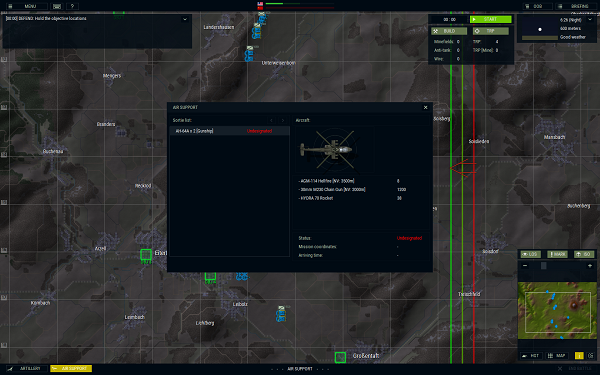[center]written by Nikola[/center]
In this Development Diary entry, I will illustrate how Cold War-era tactics, equipment and thinking can reflect in the game. While the game covers any period from 1965 to 1991, and a wide array of situations can be chosen, in this case we will concentrate on a single aspect: night-time operations and importance of thermal sights on tactical battlefield.
Night-time operations present extreme challenges. Intensive and rigorous, constant combat takes its toll on front-line soldiers; they crave sleep, fatigue is increased, concentration levels fall. At the same time soldiers need to be alert, alive to the threat that could be just moments away. One obstacle might stand in the way, the rules of engagement are different; it’s pitch black – anything can happen and will.
However, the night-vision equipment dramatically enhances capability in murky world of night-time operations, providing significant tactical benefits for armed troops. It can support all types of operations from reconnaissance and contact with the enemy to supporting retreat and delay operations.
This was especially the case when forward-looking-infrared (FLIR) weapon sights (aka thermal) were introduced in the late 1970s. This technology provided soldiers a different way of observing the battlefield at night as well as during the day. The theatre of combat became round-the-clock activity, enabling personnel to carry out operations that otherwise would not be possible, even in the most difficult of conditions.
There are two main classes of night-vision devices: image intensification and thermal. Intensification relies on the existing light to enhance an image. Thermal, by contrast, uses heat emissions to identify objects. Sights such as those on the M1 Abrams or M60A3 (TTS) tank, the Bradley, or Apache helicopter are of the latter type.
On the other hand, the Soviet Union invested heavily into former, producing top-notched image intensification systems, but the performance of thermal technology by far outstripped even the best Soviet light amplification system at that time. In hindsight, it is quite clear that pursuing light intensification technology instead of investing in prospective thermal imaging sights was a huge mistake, one that ended up setting back the Soviet Union by nearly a decade in this field.
To exemplify that disparity in performance, we will set our scenario in 1989, pitting elements of a US Armor Cavalry Squadron against a Soviet tank regimental force advancing in early morning hours, still very dark. Our force consists of an A (Apache) Cavalry Troop and D (Dakota) Tank Company, for a total of 18x M1A1 Abrams, 12x M3A1 CFV and 2x M106A2 107mm self-propelled mortar. They are also supported by an off-map howitzer battery consisting of 8x M109A3 155mm guns and a flight of Apache helicopters.
The action takes place across the western half of the valley running south from Schenklengsfeld down to Eiterfeld and Großentaft, on a northern approach to Fulda. The plan is to rely on mobility, protection and firepower to allow both stealthy and forceful maneuver, fully utilizing technological advantage of the thermal sights to destroy the enemy before he can even see us.
[center]
 [/center]
[/center][center]
 [/center]
[/center][center]READ THE FULL ENTRY HERE[/center]

